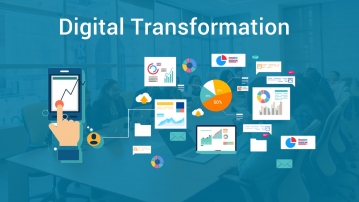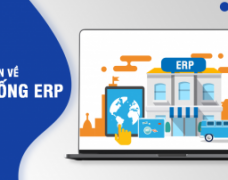 06 July, 2018
06 July, 2018
9 basic steps for successful ERP software implementation (Part 2)
In the previous article, we discussed 3 important factors that need to be implemented first in an ERP project. So what should the company do next?
Step 4: Choose pre-built or custom ERP software?
One of the hardest choices you have to make is to customize your ERP or use what’s available.
Basically, ERP software is developed by observing and applying best practices. If your operating procedures are non-conforming, your business is not a best practice.
Imagine if ERP software is deployed, what will happen to your business? Which of the following two cases are you in?
(1) Does the business process need to change to match the ERP solution?
(2) Your business has a unique competitive advantage, and the new system does not meet all of your needs. In this case, you need to customize your ERP solution to fit your business.
With case 1, your business is not a best practice, so you must set up a plan to change activities in your business to match the solution. This is also a good opportunity for you to correct bad habits, outdated, inappropriate processes going on in your business.
Step 5: Change Management
ERP software implementation is not only a transformation from an outdated IT system to a more modern system, but also a change in the daily operation of the business.
Surely you will have to face a section of employees who oppose changing the working process. It is not always solved by forcing people to follow instructions, because sometimes your employees do not understand the benefits that ERP software phầncan bring.
Create a plan to prepare for change that includes three key elements:
Targeting – people directly affected by the ERP project
Keep up-to-date information – answer all questions, thoroughly explain the change that is necessary for the sustainable development of the business, show them the benefits and specific examples of the ability to solve the problem. ERP solution will bring.
Regularly reporting – updating project progress to employees, investors and senior management. At the same time, their opinions and questions are well-founded and therefore worthy of consideration.
Step 6: Clean data
A lot of businesses don’t anticipate the importance and huge volume of data until they begin cleaning up to prepare for the transition to the new system.
The huge volume of data is because each department or individual often stores data under a different format or name. You must ensure that every member of your business maintains only one complete and accurate master data set.
What is the solution to this problem? Data cleansing can be done before you choose a provider. Schedule a time to screen data regularly to ensure data is not duplicated or scattered. Completely solve the bottlenecks and the parts that frequently appear problems.
Read more: 4 steps to more efficient data management
Due to the nature of the job, assign responsibility for filtering, data cleaning, and problem control to highly meticulous, hardworking and intelligent individuals.


















